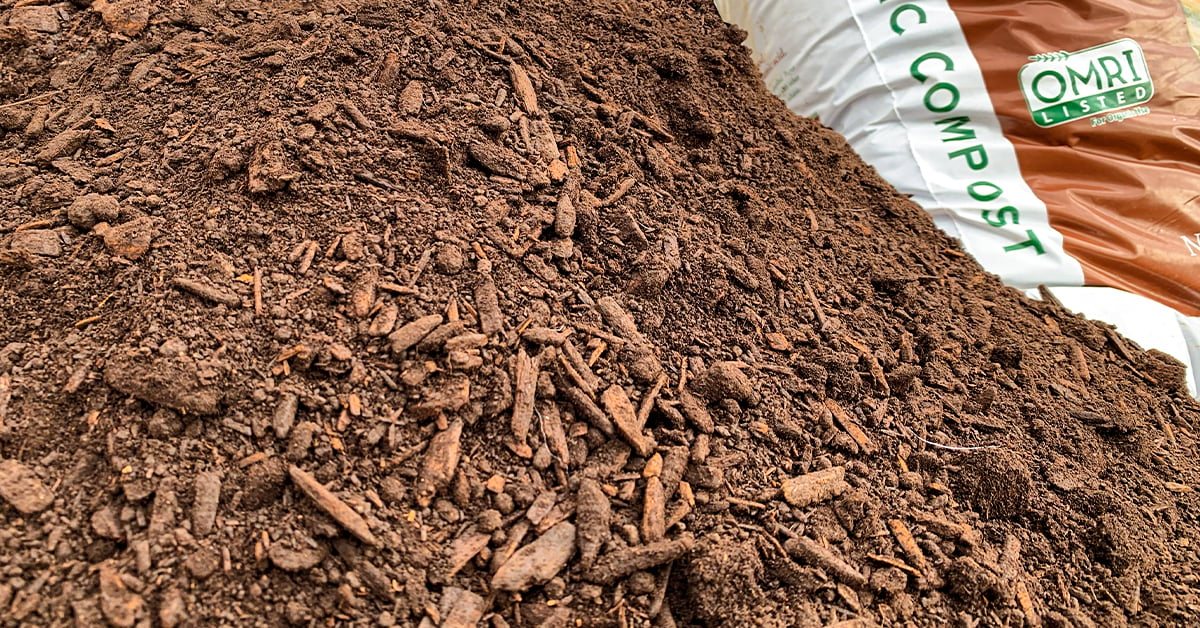
There’s a long-standing saying in gardening "healthy soil grows healthy plants", and it couldn’t be more true.
As gardeners, it’s easy for us to focus on watering schedules, plant spacing, complementary crops, pest prevention, and so on and so forth. While these are all important, they’re less important than having a soil that is rich and fertile.
If your garden’s soil doesn’t contain the nutrients needed by flowers and vegetables, your plants will not be able to grow healthy and strong. Amending your garden’s soil is like laying a strong foundation, and the fall months are the perfect time to get started.
What are the benefits to preparing your garden in the fall after you’ve harvested its crops? While both autumn and spring are great, there are a few reasons to do so during the fall months.
Our garden beds are empty after harvesting, there is less competition from pests and weeds, and the weather is comfortable for working outside. Plus, by preparing your garden now, the soil amendments will have all winter to fully compost, adding to the soil fertility prior to spring planting.
This article will answer three basic questions: What are soil amendments? Which are best for the soil here in the Intermountain West? How do I use them?
What Are Soil Amendments?
When gardeners talk about soil amendments, they’re talking about things such as garden compost, bark mulch (Soil Pep), leaves, grass clippings, humates, etc. When incorporated into the soil, all of these organic materials will—over time—become fully composted and enhance soil fertility.
In the Intermountain West we have a lot of nutrient depleted sand and clay based soil. When tilled into these types of soil, fully composted organic material will help create optimal growing conditions. These conditions allow more room for air and water in clay soils, and help to retain water and nutrients in sandy soils.
By preparing your garden soil with the right soil amendments, you’ll not only be replenishing the nutrients your plants rely on to grow, you’ll be improving the soil’s structure.

The Best Composts and Soil Amendments
Before we look at our favorite soil amendments it’s important to understand the difference between compost and mulch.
Generally, compost and mulch are both a blend of similar organic materials: wood chips, manure, leaves, etc. The key difference is that compost has decomposed, while mulch is usually raw. Mulches are usually better as a top dressing, while true composts work best as a soil amendment when preparing your garden. However, if you do prepare your garden in the fall, mulches and manures have time to fully compost in the winter months.
Here are a few of our favorites:
 |
1. Oakdell CompostOakdell Compost is made with organic ingredients like poultry manure (a good source of nitrogen), wood shavings (carbon), organic straw, humic acid and other carbon sources. This soil amendment is truly composted, and is great for introducing valuable microbes to improve your soil’s condition. |
 |
2. Nutri-MulchNutri-Mulch is a custom blend of composted turkey manure, organics and wood mulch. It helps loosen and enrich clay soils and fortify sandy soils. It’s high in nutrients, and, overall, great for tilling into vegetable gardens in the fall or early spring before planting.
|

|
3. IFA Bountiful Earth HumateA great amendment for garden soil, lawns, shrubs, and anywhere else in the yard, humates help release nutrients that are present in your soil, but are unavailable to plants. Apply IFA Bountiful Earth Humate anywhere you’d like to condition soil and improve its fertility either by itself or along with Oakdell or Nutri-Mulch compost. |
 |
4. Mountain West Products (MWP) Compost & Manure MixThis manure based compost is professionally composted, screened and blended to be an excellent soil amendment. Blend it into your garden, flower beds, or anywhere else that needs nutrients — just be sure to not apply too much to avoid burning. |
 |
5. MWP Soil PepSoil Pep is a mulch made with 3/8 minus screened bark material, and makes a great soil amendment during the fall months since the mulch will have all winter to decompose. It’s also a great option as a bark mulch or top dressing for any landscaping needs. |
 |
6. Homemade CompostLast, but certainly not least, homemade compost is an excellent way to reduce waste and give your garden fresh nutrients. Collect yard waste and organic materials like fruit and vegetable peels, coffee grounds, eggshells, dry leaves, finely chopped wood chips, and grass clippings in a composting bin or a tumbler. Be sure not to add any weeds or diseased plants to your compost, and turn every week or two to provide oxygen. |
In natural undeveloped areas, organic materials are constantly reintroduced to the soil through natural cycles. However, as plants and vegetables consume nutrients in our developed gardens, it is up to us to recreate those natural cycles. By doing so, we can ensure that spring’s crops will have a strong start. So, what steps should you take this fall to prepare your garden soil?
How to Add Amendments to Your Garden Soil
You can add soil amendments to your garden or perennial beds any time of the year, but we recommend fall as the best time to apply and prep your soil for next spring's growth. However, you can follow these same steps any time of year when your soil needs a boost.
While it doesn’t take much time, preparing your garden in the fall will make a world of difference in the nutritional value, flavor and size of next year's crops. So, as you pull up your final veggies for the year, follow these easy steps to prepare your garden soil for spring.
1. Clear Your Garden Bed
Before adding any compost, it’s a good idea to remove rocks, weeds, and plants that may be carrying pests or disease. Once the soil is clear of anything that would compete with new plant growth, lightly cover the planting area with water. Wait until the soil is moist, but not wet. Introducing compost while the soil is wet can lead to compacting and uneven dispersion.
2. Add Compost
Now that you have a workable layer of clean topsoil, it’s time to introduce your soil amendments. A good rule of thumb is that you should add about one part compost for every two parts soil. So, if you add one inch of compost it should be tilled into the top two inches of soil.
The average garden needs 1–2" of compost added yearly, but this may be adjusted according to when the soil was last amended, the size of your garden and what plants you plan to grow.
According to USU Extension, “One inch per year prevents a net loss, but 2–4 inches is preferred because it helps build your soil. Do not exceed 2-3 inches when adding manure based amendments in order to avoid salt problems.”

3. Till in Soil Amendments
Evenly spread a 2–4 inch healthy layer of compost across your garden’s topsoil and till it into the ground. Remember, healthy topsoil should have ⅓ compost and ⅔ soil.
Try to mix your soil amendments into the ground evenly, and avoid walking on the topsoil as you’re tilling. After you’ve evenly mixed the compost into the soil, lightly water, and you’ve got a plot that is ready to grow a plentiful garden come spring!
Start Growing
Fall is an excellent time of year for gardening, so don’t hang up your gloves quite yet. With the right soil amendments and a bit of time you can prepare your garden vegetables to be fruitful and healthy next spring.
For more growing tips or answers to questions, visit your local IFA Country Store. We’re always happy to help you grow the things you love.
Information for this article was provided by Daniel Thatcher, Branch Manager, Southern Utah Agronomy Center; Brenda Christophersen, Garden Center Manager, Ogden IFA Country Store; Aaron Jaussi, IFA Lawn & Garden Category Manager & former Branch Manager at Provo IFA Country Store; Ken Holt, IFA Lawn & Garden Category Manager; and Kent Mickelsen, Utah Certified Nurseryman, IFA Agronomy.








